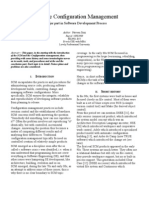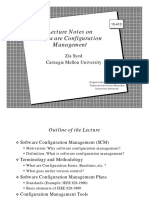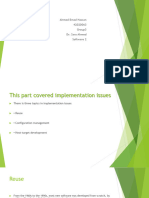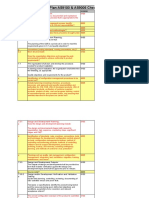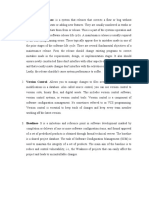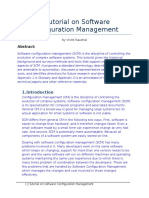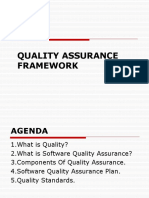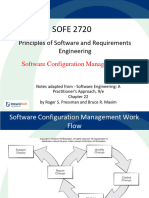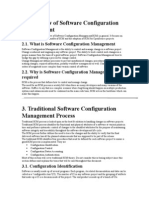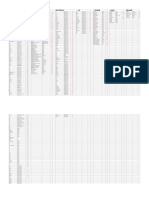0% found this document useful (0 votes)
23 views2 pagesSoftware Configuration Management - Cheatsheet
The document outlines the principles and practices of Software Configuration Management (SCM), emphasizing the importance of managing software components and their configurations throughout the development lifecycle. It details various working spaces, version control, and rules for data management, including access rights and identification of software items. Additionally, it highlights the need for concurrency control and adherence to general norms and standards for effective SCM.
Uploaded by
abhishek.kalainesanCopyright
© © All Rights Reserved
We take content rights seriously. If you suspect this is your content, claim it here.
Available Formats
Download as PDF, TXT or read online on Scribd
0% found this document useful (0 votes)
23 views2 pagesSoftware Configuration Management - Cheatsheet
The document outlines the principles and practices of Software Configuration Management (SCM), emphasizing the importance of managing software components and their configurations throughout the development lifecycle. It details various working spaces, version control, and rules for data management, including access rights and identification of software items. Additionally, it highlights the need for concurrency control and adherence to general norms and standards for effective SCM.
Uploaded by
abhishek.kalainesanCopyright
© © All Rights Reserved
We take content rights seriously. If you suspect this is your content, claim it here.
Available Formats
Download as PDF, TXT or read online on Scribd
/ 2

